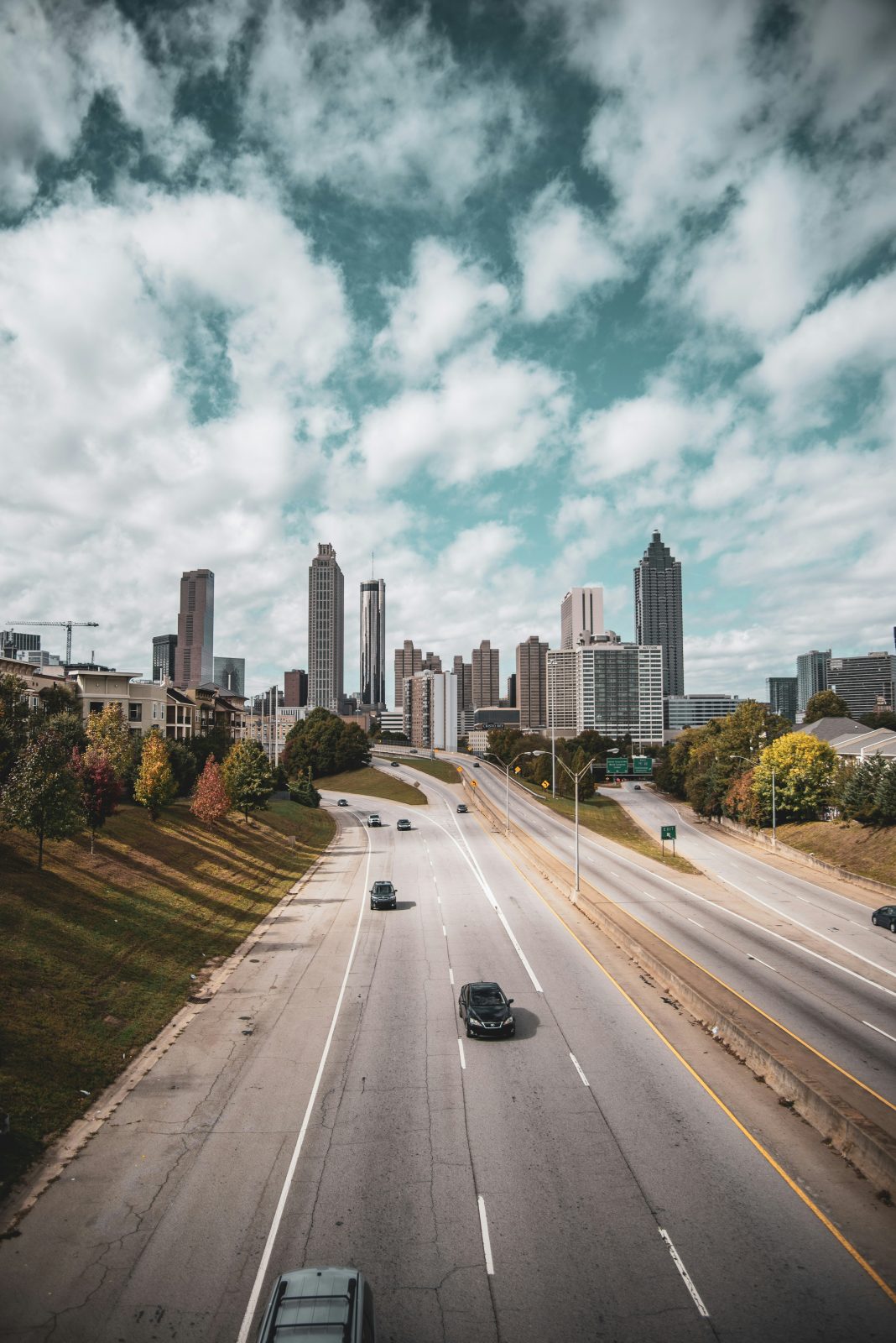Understanding Atlanta Traffic
Impact of Traffic Studies
Traffic studies in Atlanta play a significant role in understanding and managing the city’s traffic patterns. These studies are extensive and involve various assessments including site evaluations, crash histories, and 24-hour volume or peak-hour turning movement counts. The Atlanta Department of Transportation (ATLDOT) emphasizes that the process can be lengthy due to the comprehensive work involved and the high volume of requests.
Traffic studies help identify bottlenecks and areas prone to congestion. By analyzing data from these studies, city planners can develop strategies to optimize traffic flow and improve safety on the roads. Below is an example of data typically collected in traffic studies:
| Study Component | Description |
|---|---|
| Site Assessments | Field observations and surveys of specific locations |
| Crash Histories | Analysis of past traffic accidents and incidents |
| 24-Hour Volume Counts | Measurement of traffic volume over a 24-hour period |
| Peak-Hour Turning Movement Counts | Traffic flow during peak hours at intersections |
These insights are invaluable for commuters, new residents, frequent travelers, delivery drivers, tourists, and local businesses looking to navigate Atlanta efficiently.
Insights from Traffic Calming Studies
Traffic calming studies aim to make Atlanta’s roads safer and more manageable by reducing speeding and improving traffic conditions. These studies include site assessments and 24-hour speed/volume data (ATLDOT). Traffic calming measures such as speed humps, roundabouts, and reduced speed limits are implemented based on the findings from these studies.
The data collected during traffic calming studies is essential for identifying areas where interventions are needed. For example, high-speed corridors and residential areas with heavy traffic are common targets for traffic calming measures.
| Study Component | Description |
|---|---|
| Site Assessments | Evaluation of specific sites for potential traffic calming solutions |
| 24-Hour Speed/Volume Data | Measurement of traffic speed and volume over a 24-hour period |
Effective traffic calming measures not only enhance safety but also contribute to smoother traffic flow, benefiting all road users in Atlanta. By understanding the impact of both traffic studies and traffic calming initiatives, residents and visitors can better navigate the city’s unique traffic landscape.
Factors Contributing to Traffic Congestion
Understanding Atlanta’s traffic patterns requires a deep dive into the various factors that contribute to gridlock. Several key elements can make your commute more challenging.
Causes of Traffic Congestion
Extreme traffic congestion can result from various circumstances that either reduce the capacity of a road or increase the number of vehicles on it. Some primary causes include:
-
Recurring Congestion: Approximately half of U.S. traffic congestion is recurring. This results from predictable patterns such as daily commutes between work and residential areas, especially across expansive urban sprawl like Atlanta’s Wikipedia.
-
Traffic Incidents: Individual incidents such as crashes or sudden braking can exacerbate congestion. These incidents cause ripple effects, leading to sustained traffic jams Wikipedia.
-
Roadwork and Maintenance: Ongoing construction and maintenance projects can significantly reduce road capacity, leading to bottlenecks and longer travel times.
-
Weather Events: Adverse weather conditions such as heavy rain or fog can also contribute to traffic congestion by reducing visibility and making roads slippery Wikipedia.
-
Urban Sprawl: Atlanta’s extensive network of interstate highways, including I-20, I-75, I-85, I-285, I-575, and I-675, has contributed to urban sprawl. This expansion has not only led to more vehicles on the road but also to ongoing highway construction projects.
| Causes | Description |
|---|---|
| Recurring Congestion | Daily commutes between work and home |
| Traffic Incidents | Crashes and sudden braking |
| Roadwork | Ongoing construction |
| Weather | Adverse conditions like rain or fog |
| Urban Sprawl | Growing city size and highway projects |
Effects of Traffic Congestion
Traffic congestion has numerous negative effects on drivers and the community at large. These include:
-
Increased Travel Time: Drivers in Atlanta spend an average of 51 additional hours per year behind the wheel compared to the national average.
-
Road Rage and Aggressive Driving: High levels of congestion can lead to road rage and aggressive driving behaviors, making the roads more dangerous. This can result in altercations and collisions, sometimes leading to injuries or fatalities Wikipedia.
-
Environmental Impact: More vehicles idling in traffic contribute to air pollution and increased fuel consumption.
-
Economic Costs: Delays and lower productivity negatively affect businesses, particularly those relying on timely deliveries and logistics.
-
Health Risks: Prolonged exposure to traffic congestion can lead to increased stress and associated health problems like cardiovascular diseases.
| Effects | Impact |
|---|---|
| Increased Travel Time | 51 additional hours/year |
| Road Rage | Dangerous driving behaviors |
| Environmental Impact | Increased pollution and fuel consumption |
| Economic Costs | Delays, reduced productivity |
| Health Risks | Stress and related health problems |
Recognizing these causes and effects can help you better navigate Atlanta’s traffic and adopt strategies to avoid congestion. Understanding these patterns is vital for optimizing your commute and ensuring a safer, more efficient travel experience.
Navigating Atlanta’s Traffic
Best Driving Times
Understanding the best times to drive can significantly impact your travel experience in Atlanta. Rush hours typically occur on weekdays between 7–10 AM and 4–7 PM. During these times, commuters can expect heavy traffic, with evening rush hour often considered more congested. Construction activities happening during these periods can further worsen traffic conditions.
The optimal time to drive through Atlanta is between 10 AM and 3 PM. This window allows drivers to avoid the bulk of both the morning and evening rush hours. However, it’s essential to remain aware of events such as games or concerts which can disrupt normal traffic patterns.
| Time of Day | Traffic Status |
|---|---|
| Early Morning (6 AM – 7 AM) | Light |
| Rush Hour Morning (7 AM – 10 AM) | Heavy |
| Midday (10 AM – 3 PM) | Moderate |
| Rush Hour Evening (4 PM – 7 PM) | Heavy |
| Late Evening (7 PM – 10 PM) | Light |
Utilizing Traffic Apps
Leveraging traffic apps can transform your commuting experience by helping you avoid traffic snarls and identify alternative routes. Popular traffic apps like Waze, GA 511, and Google Maps offer real-time traffic updates, alternative routes, and estimated travel times, thereby enabling you to make informed decisions.
- Waze:
- Provides real-time updates from other drivers.
- Alerts for accidents, road hazards, and traffic jams.
- Community-driven app offering alternate routes.
- GA 511:
- Georgia-specific app with detailed traffic information.
- Updates on construction zones, closures, and road conditions.
- Live traffic camera feeds and congestion reports.
- Google Maps:
- Comprehensive traffic data with historical trends.
- Integrated public transit information.
- Alternative route suggestions and accurate ETA forecasts.
Checking these apps before leaving and while on the road ensures that drivers stay updated on current conditions, helping navigate through Atlanta’s notorious traffic more effectively (Explore The South). For the best results, keep the notifications for these apps turned on, so that timely alerts for any traffic disruptions can be received.
Tips for Efficient Driving
Navigating Atlanta’s traffic can be a challenge, but employing efficient driving strategies can ease your commute. Here are some tips to help you drive more effectively in the city.
Lane Navigation Strategies
Efficient lane navigation is key to navigating Atlanta’s interstates and highways smoothly. One crucial strategy is to plan ahead by knowing your exit in advance. This helps in making informed decisions on which lanes to occupy.
- Stay in the Middle Lane: Generally, sticking to the middle lane while driving through Atlanta helps avoid frequent exits and merges that happen in the left and right lanes. This strategy allows for smoother lane changes and minimizes abrupt maneuvers.
- Be Mindful of Timing: During rush hours (7-10 AM and 4-7 PM), lanes get congested quickly (Quora). Plan your lane changes well ahead of time.
- Use Navigation Apps: Utilize tools like Waze, GA 511, and Google Maps to get real-time lane guidance, alternative route suggestions, and traffic updates.
Road Safety Tips for Atlanta
Ensuring road safety in a congested city like Atlanta involves both vigilance and courteous driving.
- Alertness: Stay focused and alert, avoiding distractions like texting, eating, or applying makeup while driving. This is particularly important in heavy traffic conditions.
- Courteous Driving: Use turn signals, adhere to traffic rules, and maintain a safe following distance to avoid accidents.
- Time Management: To avoid the bulk of traffics, consider driving through Atlanta between 10 AM and 3 PM if possible.
| Time of Day | Traffic Level |
|---|---|
| 7–10 AM | High |
| 10 AM–3 PM | Low |
| 4–7 PM | High |
- Understanding Key Routes: Familiarize yourself with major highways like I-285 and I-75, which experience heavy traffic throughout the day. Knowing alternative routes can also be helpful.
- Event Awareness: Be aware of big events such as games or concerts, as they can impact traffic patterns substantially.
By implementing these strategies, drivers can navigate Atlanta’s traffic patterns more effectively, making their commutes less stressful and more efficient.





